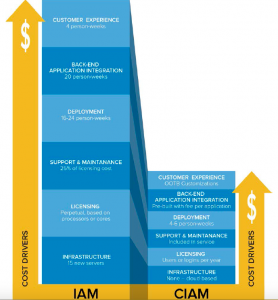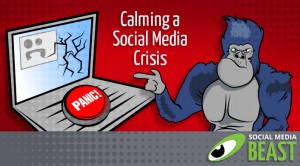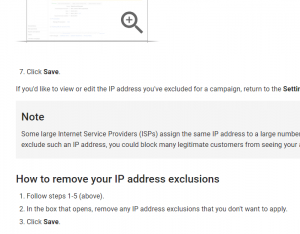
Digital ad spend is increasing. Digital ad formats are proliferating. Digital technology is enabling automated and highly targeted audience buying. Digital audience measurement is finally comparable to TV. Digital ROIs are proven.
As digital continues its inexorable rise, it’s an increasingly common question from clients:
“Should I move to an all digital plan?”
This question is inevitably quickly followed by others: Have any of your clients done so? Does it work? What do I need to know to be successful with an all digital plan? What are the risks of all digital?”
“All digital” is a big and bold move for any Marketer. Brands have been steadily increasing their digital ad spend as they get increasingly comfortable with digital advertising and measurement, but quitting TV entirely? That’s a big move with multiple factors to consider.
Guidelines for Creating All Digital Plans
Here are ten key questions to ask—and answer—before you decide to go “all digital.”
- How talented is my agency at creating digital ads? Most large brands have years of experience with their agencies creating: 30 TV ads and refining them thru copy testing. They know what works, what doesn’t, how to measure and improve, and are comfortable with the medium. Digital presents vastly more creative options but with options typically comes less experience and confidence. The key is making sure that you really have the digital creative talent and expertise you need before moving to an all digital plan.
- How important is video to my marketing efforts? Different brands and marketing strategies demand different levels of sight, sound, and motion—that is, video. If your brand advertising strategy requires all video, an all digital plan can be problematic. The amount and cost of high quality video inventory can be limiting, especially if you need to achieve high levels of reach.
- Can a digital plan achieve high levels of reach? Achieving high levels of unduplicated reach with an all digital plan is challenging. TV plans can easily deliver unduplicated reach of 85% to 90%. Nielsen Digital Ad Ratings show that the best digital plans struggle to exceed 60%. And achieving high levels of digital video reach is even harder. This is a critical issue, as most studies have generally shown that reach and sales response have a linear relationship. Give up reach, and you give up sales.
- Can I effectively find my target audience? Digital offers big advantages in targeting vs. traditional TV. In digital, you can buy audiences based on almost any variable—demographics, buyer behavior, TV viewing habits, etc. You can even use your own first party customer data to build “look alike” models to find similar digital audiences. TV is becoming addressable and is increasingly incorporating audience data beyond age and gender, but for now digital is the better choice for hyper-targeted audience campaigns.
- Will my digital ads be viewable? Numerous MRC accredited viewability measurement tools point to about the same conclusion: generally, about 50% of digital ad impressions aren’t viewable. And, of course, if an ad isn’t viewable, it can’t have much impact. To be fair, TV has its own viewability challenges with people multi-tasking, etc. But, if you’re going to go all digital, your agency has to address the viewability issue or you risk wasting significant media spend.
- Will my digital ads actually be delivered to my target audience? Even if your ad is served to a human and is viewable, it needs to be delivered to the correct audience. Nielsen data across over 20 thousand digital ad campaigns shows that only about 60% of digital ad impressions reach the intended audience. The good news is that most digital publishers, including Google and Facebook, now offer audience guarantees to ensure that your digital ad buy is really reaching your intended audience. Going all digital? Get audience guarantees.
- Are digital ads as effective as TV ads? Moving out of TV and into digital raises an important question: how effective are digital ads relative to traditional linear TV ads? The answer is “it depends.” Display ads are generally less effective in driving brand lift than TV ads. But, online video ads are typically more effective than their linear TV counterparts. Moving from TV to an all display digital plan will almost certainly depress your results. The key is to understand the mix of video and display in an all digital plan and be sure that you’re not giving up overall effectiveness.
- How big is the opportunity to optimize my digital plans in-flight? A big advantage of digital is the ability to measure brand lift or sales performance in flight and make adjustments to optimize performance before the campaign ends. Rotating creative units based on performance, capping exposure frequency where response flattens out, and focusing spending on sites which drive higher lift are all feasible in digital. Brands routinely improve ad performance by as much as +30% by taking advantage of digital real-time optimization.
- How will giving up cross-platform exposure impact my ad performance? We know that cross-platform ad exposure (e.g. the same person seeing both your TV and digital ads) drives greater brand lift than single platform exposure, even when adjusted for frequency. The same is true for digital video and display ads. What are you giving up by moving to all digital? If you’re moving to all display, you’re giving up brand lift. If you’re digital plan is a mix of video and display, then you’re likely not giving up much, if anything.
- What’s the cost impact of moving all digital? Again, there’s no simple answer. Display is usually cheaper while online video is generally more expensive than TV on a CPM basis. But programmatic and real-time bidding capabilities give you vastly more control of how much you pay for audiences. Historically, TV provided more accountability with audience guarantees for reaching your desired audience, but digital has quickly caught up over the past several years.
So, what to do? What’s my advice to CMOs? Answer the 10 questions above but consider this a starting point. Then think about your brand and business situation and what other important questions need to be considered.
The fundamentals of advertising success don’t really change with a move to all digital. Reaching the right audience, generating brand lift, and driving a volumetric reaction is what’s required for digital success.
The difference is that digital is vastly more complicated. There are more dials to turn and levers to pull to improve ad performance. But there are also big holes to stumble into if you’re not careful. Don’t make a big move without asking the ten questions above.
(221)
Report Post






